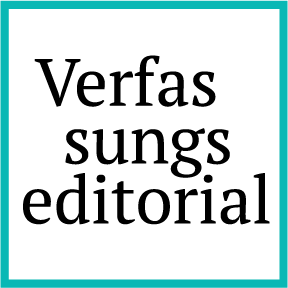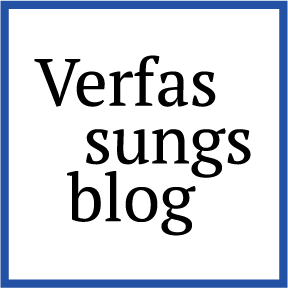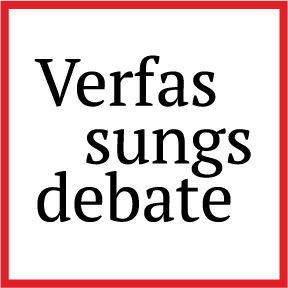Towards the True Price of Meat
A Cap-and-Trade Scheme for Animal Agriculture
Despite mounting scientific and ethical consensus about the multiple harms of meat production for animals, humans and the environment, current regulatory frameworks largely fail to internalise these costs. On the one hand, animal agriculture is resource-intensive, contributing significantly to climate change, deforestation, water pollution, and biodiversity loss. On the other, it entails systemic ethical issues with regard to the breeding, keeping and killing of animals. This contribution explores the legal feasibility of a cap-and-trade system for meat designed to address the multifaceted harms of animal agriculture and to push meat products closer to their true price.
Cap-and-trade systems are intertemporal tools designed to progressively transform economic activity. They work by setting a maximum allowable level of a given harmful activity and distributing tradable permits among actors. First proposed in the 1960s by Canadian economist John Dales, a market for harmful activity measures societal benefits based on an actor’s willingness to pay for it, thereby aligning with the Coase theorem. By adapting mechanisms from established emissions trading schemes, novel models are proposed in which tradable certificates reflect the cumulative impact of meat production.
Extending existing emissions trading to animal agriculture
Emissions trading has become the preferred policy instrument to reduce carbon emissions since it was embraced in Art. 17 of the Kyoto Protocol to the UN Framework Convention on Climate Change. While cap-and-trade programs exist for carbon emissions, agriculture has largely remained outside their scope. At the same time, animal agriculture is responsible for approximately 18% of global anthropogenic greenhouse gas emissions.
Although the EU Emissions Trading System currently applies primarily to energy-intensive sectors, its structure could be adapted to cover animal agriculture. Similar to the thresholds contained in Annex I of Directive 2003/87/EC governing the current trading system, small farming enterprises would have to be excluded from its scope. The covered operators would have to obtain emissions permits as provided for in Art. 4 to 6 of the Directive, committing themselves to a monitoring plan and the yearly obligation to surrender allowances corresponding to their emissions, which would be verified by an independent entity according to Regulation (EU) 600/2012. Alternatively, individual member states may implement national schemes for emission allowance trading, as allowed by Art. 24 (1) of Directive 2003/87/EC.
Moreover, a new system would have to be aligned with the farming subsidies under the Common Agricultural Policy. Currently, the policy provides subsidies that often favour intensive livestock operations. It could be modified to complement a cap-and-trade scheme by balancing market distortions or providing additional incentives in special cases.
While incorporating livestock emissions into the European or other greenhouse gas trading schemes is a necessary step towards a serious attempt to reduce the effects of climate change, such schemes would still neglect a large part of externalities resulting from meat production.
Bundling the externalities of meat
The logic of cap and trade could be applied to other externalities of meat production by capping total societal harm and enabling producers to trade certificates based on their relative impact. Environmentally, meat production contributes not only to climate change, but also to deforestation, water pollution, and biodiversity loss. Public health concerns include zoonotic disease transmission, dietary-related illnesses such as cardiovascular diseases and certain cancers, and the emergence of antibiotic resistance due to overuse in livestock. On top of it, the sector is responsible for extensive animal suffering, particularly within intensive farming systems. Practices such as confinement, tail docking, debeaking, excessive growth due to genetic selection and the premature slaughter of billions of sentient beings annually are routine in modern animal agriculture. These harms are largely invisible to consumers and unaccounted for in market prices.
Environmental laws may address aspects such as water pollution or land use, but there is rarely a unified legal approach that encompasses the full spectrum of harms associated with meat production. Bundling multiple harms into a single regulatory framework avoids the pitfalls of piecemeal policies. It aligns environmental, human health, and ethical objectives within a coherent market mechanism in line with the polluter pays principle enshrined in Art. 191 (2) TFEU. Moreover, the Farm to Fork Strategy within the European Green Deal explicitly calls for reduced meat consumption and improved animal welfare, lending policy support to such a scheme.
A cap could be set based on the total permissible environmental, health and animal welfare burden, and operators would need to hold certificates proportional to the impact of their activity. Operators exceeding the cap would need to buy additional certificates from lower-impact competitors or invest in methods that reduce harm. Trading certificates would create a market price for the externalities and thus internalise them, while gradually lowering the cap over time would progressively reduce their quantity.
The scheme could be aimed at different levels of meat production – namely at farmers, processors, retailers or even consumers. Most emissions are incurred by farmers and processors, who are in a position to monitor and report them and would therefore be suitable actors in a certificate trading system. For the market mechanism to work efficiently, traders should be equipped with approximately equal bargaining power, making farmers appear less suited due to large differences in the size of farming operations. In any case, smaller enterprises up to a certain threshold would have to be excluded from the scope. Other actors down the value chain will usually be affected indirectly, as costs can be passed on through to consumers leading to higher prices for harmful products.
Impact-based vs. cause-based schemes
With regard to measuring meat externalities, two principal variants can be considered: one based on quantifiable impacts (e.g. emissions, welfare scores, antibiotic use), and another based on quantities and types of meat causing these impacts.
In an impact-based scheme, certificates could be benchmarked using a composite impact score that combines environmental damage, animal health, and other relevant metrics. Factors may include greenhouse gas emissions and land use per kilogram of meat, welfare conditions, use of antibiotics and veterinary drugs, biodiversity loss and ecosystem disruption. For instance, a kilogram of beef from an intensive feedlot might be rated high on CO₂-equivalents and low on welfare. A unique challenge is the legal codification of externalities that are diverse and, in some cases, morally contested. Unlike carbon dioxide, which can be measured in metric tons, the harms of meat production span environmental, public health, and ethical dimensions. Thus, the law would have to develop a methodology for calculating a composite “externality score” that can be embedded in each certificate. This raises complex legal questions about standard-setting. Which harms are to be included, and how are they to be weighted? Should methane emissions count more than antibiotic resistance? How is animal suffering quantified in legal terms? These decisions will inevitably involve contested value judgments and require interdisciplinary input. Moreover, the principle of legal certainty demands that any system of externality valuation be transparent, predictable, and reviewable. Stakeholders must be able to understand how scores are calculated and have access to mechanisms for challenging or appealing them.
A cause-based measurement would avoid these intricacies by making use of the connection between the quantity and type of meat placed on the market and its impacts. Under this model, producers or importers would require a set number of certificates per unit of meat based on average impacts. Using the number of animals kept and slaughtered as a calculation basis – potentially adjusted by species-specific weighting – would allow this approach to take into account the notion that an animal’s life holds intrinsic value, as recognised in certain animal protection legislation (see, e.g., Art. 1.3 of the Dutch Animal Welfare Act; Section 1 of the German Animal Welfare Act; Art. 1, 3 lit. c of the Swiss Animal Welfare Act). Furthermore, this model would be easier to implement and monitor and could lead the way to a gradual reduction of the number of animals raised and killed for human consumption.
Getting nonhuman stakeholders at the negotiating table
Incorporating animal protection into a cap-and-trade scheme for meat production suggests the representation of animal interests in the distribution of certificates. For the European Emissions Trading System, industry groups have successfully lobbied in favour of distributing certificates for free, based on historical production (so-called “grandfathering” model). Alternatively, certificates could be auctioned to the highest bidders, as is being gradually implemented in the European system, eliminating the risk of misrepresenting historical emissions.
A more innovative model could involve non-governmental representatives of the affected interests as initial holders of certificates. Representing the affected animals, environments and humans, they should be allocated the power to consent to harm inflicted on the represented interests and to negotiate compensation for that harm. To avoid the risk of representatives withholding certificates from producers, they could be required to sell all certificates within a specified time frame, after which any remaining certificates would be auctioned.
Undesirable trade-offs?
While certificate trading has been praised for its efficiency, flexibility, transparency, innovation incentives and political advantages, its benefits have also been called into question, especially when put into practice. This criticism relates to the general limitations of market-based instruments that stem from the non-ideal circumstances of real-world scenarios. With regard to emissions trading, the growing complexity of existing schemes is at odds with the market’s short-term perspective and its need for simple and clear signals. This lends additional support for the above-mentioned model based on animal numbers compared to a complex impact assessment prone to manipulations.
In the context of meat production, certificate trading poses an additional risk of trade-offs between the various types of externalities. By increasing the cost of harmful practices, the scheme would spur investment in less damaging alternatives. Such alternatives may, however, involve more harm to one interest and less harm to another interest with only the aggregate scoring favourable. This can lead to one type of externality being played off against another. For instance, feed additives may reduce the climate impact of animal husbandry, but raise welfare concerns. A balanced cap-and-trade scheme should aim at ruling out such conflicts between independent goals in the first place and promote its various goals equally. Again, this can be achieved by basing certificates on animal numbers.
Finally, assigning numerical values to animal lives risks commodifying ethical concerns in ways that some critics may find objectionable. While practical necessity may demand such calculations, they must be handled with philosophical care and public dialogue. Additionally, clear and binding reduction paths work precisely towards decommodification, albeit within the existing commodification logic. It cannot be ignored that market-based capitalism is the predominant framework of meat production, from which any transformation has to commence.
Conclusion: An alternative to rights-holding?
The models discussed here show how the true costs of meat production could gradually be internalised and reflected in market prices. Certificate trading does not require the allocation of affected interests to specific entities as holders of these interests or respective rights, but can be described as an impersonal way of legal protection. Conversely, recognising rights of animals or the environment could – among other functions – achieve similar results, if such rights are subject to commercial transactions such as labour relations entailing remuneration for animal work. The individualist nature of right-holding, however, usually prevents the bundling of externalities affecting different actors. In this regard, cap and trade may offer a solution.
Compared to taxes or subsidies, a cap-and-trade scheme is characterised by clear goal-setting, decentralised allocation of harmful activity and, as a consequence, enhanced political feasibility. Yet, it should not stand alone, but be complemented by other instruments, e.g. a meat levy that could serve as a price floor for meat certificates. Revenues of the certificate trade could be reinvested into alternative protein development, animal sanctuaries, or farmer transition schemes.
Overall, the requirement to purchase and trade a gradually decreasing number of certificates for the impacts of meat production creates traceable accountability for meat externalities, reduces these externalities where it is most efficient, and incentivises businesses to find less harmful alternatives. In the long run, a cap-and-trade scheme has the potential to drive a transition toward more ethical and sustainable food systems.



